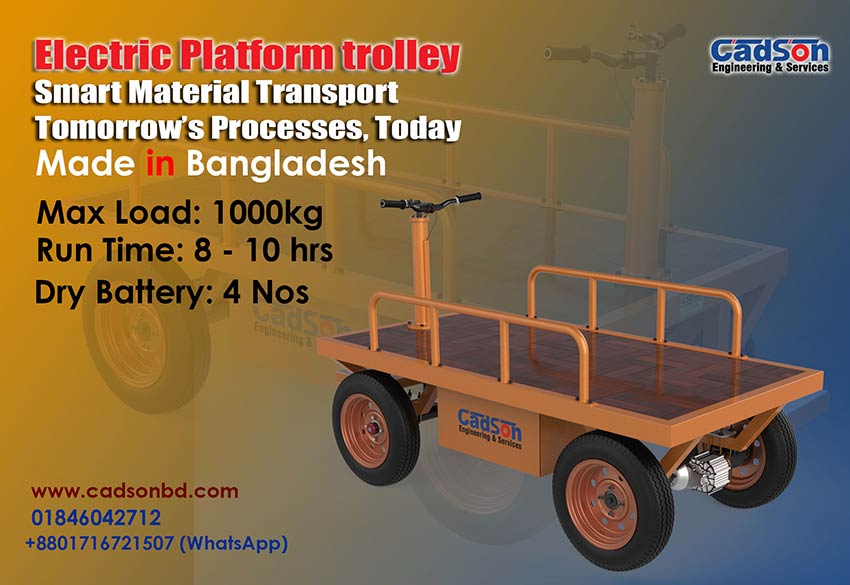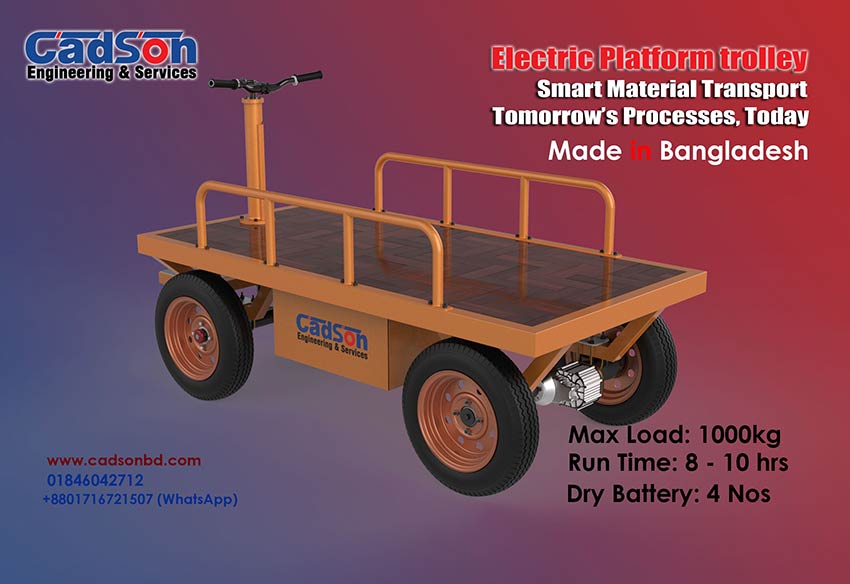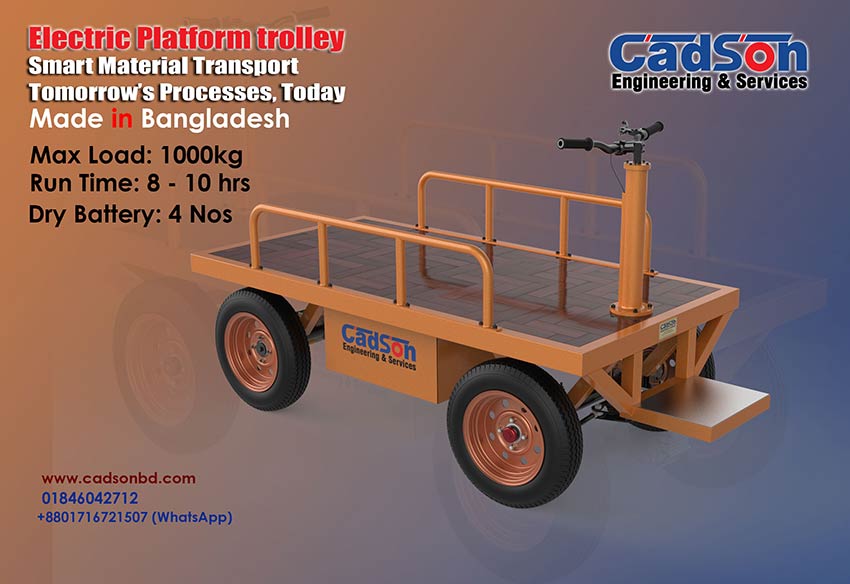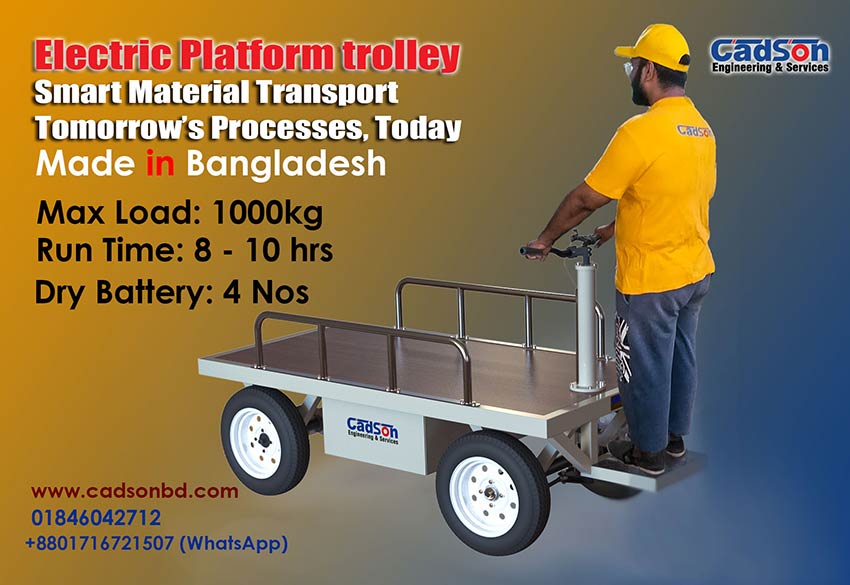Cadson Engineering & Services
RAS FISH FARM | ROTI MACHINE | FOOD| AUTOMATION | CONSTRUCTION | CONVEYOR | MACHINE | DESIGN | SMART ENGINEERING | MANAGEMENT
Let’s recalculate with the given parameters:
Battery Capacity
Each battery provides: 12V × 120Ah = 1440 Wh
Total battery capacity for 5 batteries: Total Battery Capacity=5×1440 Wh=7200 Wh.
Torque and Force Calculation
Assume motor operates at 300 RPM (converted to radians per second): 300 RPM=300×2π60≈31.42 rad/s. 300 RPM = 300 X{2pi/60} \approx. 31.42 rad/s.
Torque (T) calculation: T=Pω=1500 W/31.42 rad/s≈47.77 Nm.
Force (F) calculation: F=T/r =47.77 Nm/ 0.21 m≈227.48 Nm
Required Force to Move 750 kg
Assuming a rolling friction coefficient (μ) of 0.02 for rubber on concrete: F required=m×g×μ=750 kg×9.81 m/s2×0.02≈147.15 N
Comparison of Forces
The available force (227.48 N) from the 1500W motor is greater than the required force (147.15 N), so the motor can move the load.
Power Consumption with Load on Motor
Effective power consumption considering 60% usage due to the accelerator: Effective Power=1500 W×0.6=900 W
Run Time Calculation




With a 1500W motor, 5 batteries of 12V 120Ah each, and a 750 kg total weight (500 kg load + 250 kg trolley weight), the trolley can run for approximately 7.2 hours under moderate conditions, assuming the motor is used at 60% capacity due to the accelerator.
This calculation assumes a flat, smooth surface and optimal conditions. Real-world factors such as terrain and driving patterns may slightly affect this estimate.
To summarize, with a 1500W motor, 5 batteries of 12V 120Ah each, a total load of 500 kg, and a trolley weight of 250 kg, you can expect approximately 7.2 hours of run time assuming the motor is used at 60% capacity due to the accelerator.
Here’s a breakdown of the final configuration and calculations:
—-END—-
Research & Calculation by James Martin Adhikary
(Founder & System Designer)
CADSON Engineering & Services